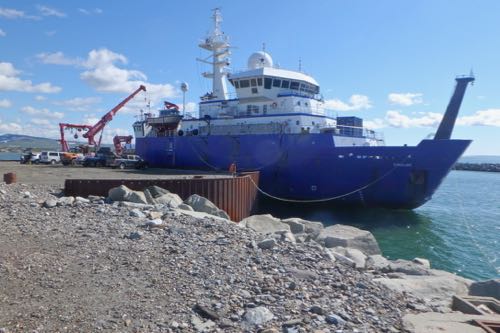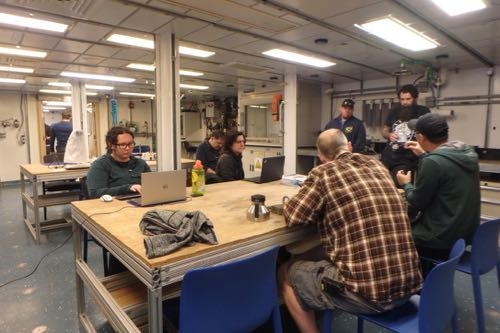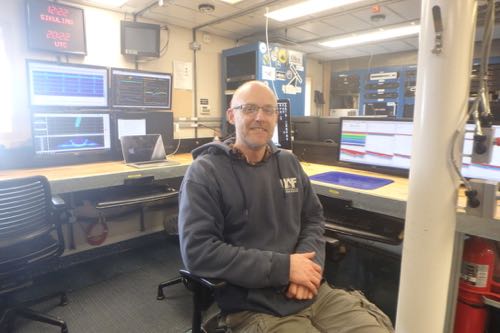While we are traveling to our research site, a journey that is taking two and a half days, we have some down time. In my case, time to explore the boat.

The Sikuliaq is a purpose built 261 foot research vessel. Sikuliaq, pronounced [see-KOO-lee-auk], is an Inupiaq name meaning "young sea ice" or "young sea ice that is safe to walk on". The University of Alaska is proud to operate the R/V Sikuliaq on the behalf of the National Science Foundation (NSF). On this cruise, there are 8 scientists, including myself, and 22 crew. The crew consists of many roles including operations, engineering, kitchens and science techs. They are essential to the smooth running of the boat and extremely friendly and approachable. It makes for a great atmosphere aboard the ship.
Part of the morning was spent discussing how we are going to carry out our sampling once we reach the testing sites. It will be a 24 hour operation with two shifts. We will all be present for the first station and then split into two groups. One of the tasks today was to meet with the ship’s marine technicians and come up with a plan so we can deploy the sonar, plankton nets and planktonscope in the correct way.

The rest of the day was spent doing equipment checks, setting up computers and in my case, interviewing the ship’s crew. Keep a look out for crew profiles with every journal!

Name: Dan Naber
Position: Marine Science Technician
From: Fairbanks, Alaska
How did you end up on the R/V Sikuliaq?: Dan went to University of Alaska, Fairbanks to gain a degree in geology and was inspired by listening to a talk on Antarctica. He volunteered to work with a sea ice scientist in Antarctica, worked with the science tech on the ship and thought this is a cool job. After years of working various jobs and as an environmental technician, he became the relief science tech on the Sikuliaq. He has been on this ship for 1 ½ years.
What are the best and worst parts of your job?: The best part of the job is the variety of work. Working with new groups of scientists every cruise presents different challenges and opportunities to learn new skills which you don’t necessarily learn in training. Another great part of the job is working with an awesome crew.
The worst part is probably long hours and adjusting to day and night shift changes.
Thank you Dan for all your computer help!


Comments